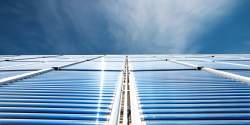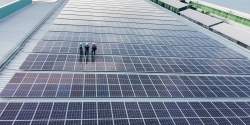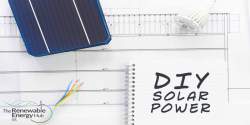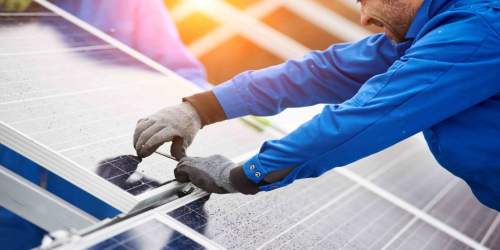Read Time : 3 Minutes
Learn about Transparent Solar Panels
You may have heard of transparent solar panels and their production by Polysolar in the UK. It provides us with a new and exciting form of solar energy that is generated through what looks like clear glass. There is a great deal of research and development going into this new form of solar energy generation, and this page takes you through some of the key information. With a range of applications, this could be the next big thing in renewable energy.
What are They?
Polysolar tends to use thin film photovoltaic (PV) technology when they manufacture their solar glass, which is known as BIPV photovoltaic solar glass. The material used to make the thin film cells is ideal for BIPV solutions as it enables them to produce cells solar PV panels that are transparent or opaque. This makes them ideal for a range of applications such as the following:
- Facades
- Canopies
- Skylights
- Curtain walls
The thin film technology used in these panels is designed specifically for BIPV applications, and it offers performance advantages on the following ways:
- Performance at poor angles
Thin film solar cells are able to run at a high level of efficiency even when they are not at optimal angles for direct sunlight. This offers greater installation potential, such as vertically on buildings, without compromising the overall efficiency.
- Efficiency in low lighting
Thin film solar cells are able to operate in as little as 10% sunlight, extending the number of hours over the year in which electricity can be produced, providing a more consistence energy yield. In addition to this, thin film alignment causes panels to be less affected by shading.
- Superior heat tolerance
The panels are less affected by high temperatures. As a result, they don’t require ventilation in order to perform at optimal levels. In addition to this, thin film works at a higher level of efficiency over a greater temperature range. This means they get the maximum potential energy production.
- Comparable costs
The initial installation costs are similar to conventional building materials. However, their additional multi-functionality makes them an economically superior choice.
- Strong panels
The panels are tough and rigid, with laminated glass to increase the overall functionality of the panels, as well as their potential for installation applications.
COMPARE PRICES FROM LOCAL INSTALLERS
Compare prices from local companies fast & free
Enter your postcode to compare quotes from leading professionals. We promise to keep your information Safe & Secure. Privacy Policy
Cost and Efficiency
The latest design from Polysolar has a layer of thin film photovoltaic embedded in the centre of each glass panel. This design costs £250 per square meter, and the grey tinted panel is able to produce efficiency levels of 12% to 15%. This is more than a standard thin film solar panel, but also an increase compared to the original orange-tinted model from the company. The original model only cost £175 per square meter, but it also only produced efficiency levels of around 9%.
One of the great things about these panels is that while they are transparent, they also control glare and reduce thermal gain, which is a huge factor when it comes to reducing energy use within a building. Their next step is to create a solar panel that is completely clear with no tinting. In 2014, researchers at Michigan State University were able to create one named the transparent luminescent solar concentrator. It sits over windows and directs the infrared light to photovoltaic solar cells at the edge of the concentrator.
However, this clear panel is only capable of 1% efficiency, meaning it still has a long way to go. In more exciting news, the research and development group at Polysolar have created a perfectly clear organic PV glazing on a very small scale. They expect full-scale production to be going forward around 2018.
Common Applications
The first generation of panels was 7mm thick and weighed 24kg. They were installed in the forecourts of two Sainsbury’s petrol stations, as well as a canopy at the Barbican Centre in London. The latest installations for these innovative panels can be found in the form of a transparent solar bus shelter in the centre of London’s canary Wharf.
This is something that provides businesses in the area with the option to adopt the panels as their own. This is because the bus station is not only made from their PV glass, but also features PV powered interactive displays, signage, and lighting, with the excess running back to the grid. They can also be installed in greenhouses as both the roof and walls, or even your conservatory and skylights. Using them in your home and garden can help to generate an excellent amount of electricity for your household appliances.
Want to Know More?
Have you found yourself interested in solar panels? If you're ready to take the plunge and get some quotes, head over to our directory of approved installation companies. Or simply give us a ring using the number at the top of this page and have a chat.
Find a local installer
Welcome to the biggest directory of UK renewable energy companies





 How Much do Solar Panel Systems Cost in 2024?
How Much do Solar Panel Systems Cost in 2024?







